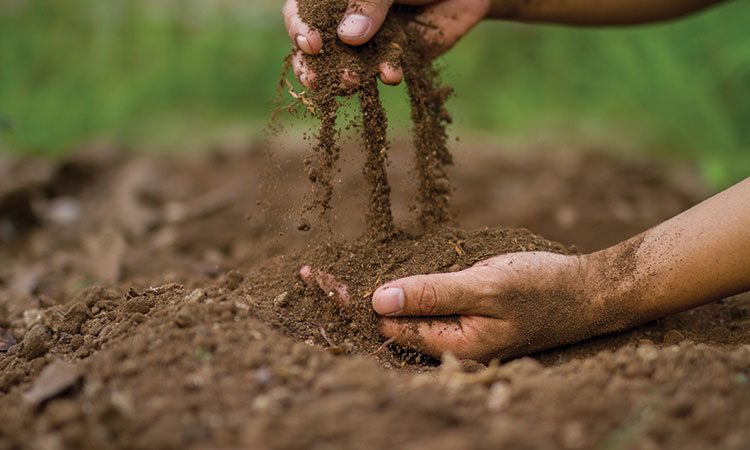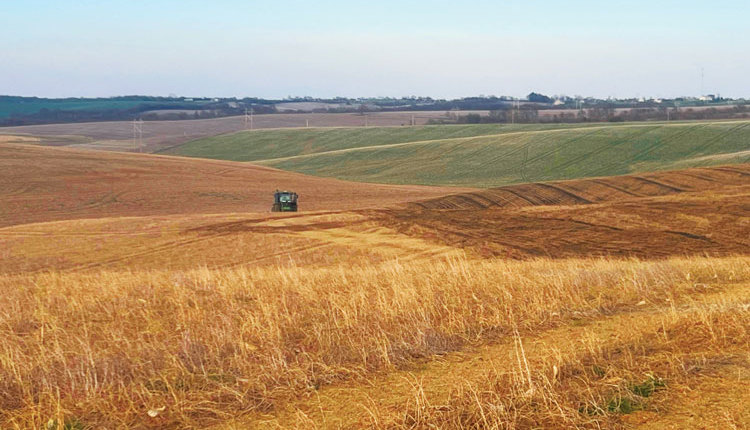The author is a nutrient management specialist and sampling director at Rock River Laboratory in Watertown, Wis.

Pulling a quality soil sample is rule number one of soil analysis. The most accurate laboratory in the world cannot accurately evaluate anything without a quality, representative sample. Planning and timing rules call for soil sampling every four years, but many other considerations exist that affect this ideal sample.
Nutrient management planning is a prevalent director of soil sampling schemes and plays into every sampling strategy. Crop rotation and input prices tend to direct both the sampling plan and even the decision to sample in many cases. What likely seems to be an uncomplicated subject can quickly become overwhelming, but learning more about key factors affecting soil sampling and analysis can help prepare operators to make the best decision for future fertility success.
Representative samples
Between almost two decades of soil sampling experience and directing a sampling crew for most of that time, I’ve had the opportunity to glean the good and the bad across all types of soil sampling. One of the most common things we hear is, “The soil is always there; why can’t you sample it now?” While it is always possible to put soil in a sample bag, it is not always possible to pull a high-quality, representative soil sample.
Most often, such snipes are made when it comes to sampling following primary tillage. The soil is indeed present, but tillage has destroyed the soil’s structure. It’s no longer a homogeneous, stable substance. Instead, it has a series of peaks and valleys that are full of air. The easiest means to introduce error into a soil sample is through inconsistent sampling depth. And as you’ve probably gathered through this story, it is nearly impossible to have a consistent sample depth in an environment like that after tillage.
The second most common reason a field must be bypassed for sampling is because of manure application. The reasons for this are more apparent than those surrounding tillage. Manure is applied as a fertility source; therefore, application of manure could substantially change the soil analysis value.
The manure application method also plays a significant role in the decision to sample. While not ideal, soil sampling may still be an option following a light application of poultry litter. However, soil sampling is generally out of the equation following a dragline application of liquid dairy manure. Not only is there a large amount of fertility that may contribute to inconsistencies, but the application method of injected manure also includes tillage.
Is it fall, y’all?
Pulling soil samples following harvest in the fall has long been considered the only “acceptable” timing. While this timing may appear to be the standard for soil sampling, it is certainly not the only window of time to pull a soil sample.
My colleagues and I have evaluated data and written a hearty handful of articles on this subject. A quick internet search will yield more than one article on this heavily debated topic. Research has shown that seasonal variation between spring soil sampling and fall soil sampling does not exist at a level that will warrant significant management decision changes.
Identifying a soil sampling program that will fit into your operation is far more valuable than always pulling samples in the fall. This may include sampling in July following wheat harvest or after third crop alfalfa to spread out the fall harvest rush. This may even include sampling corn after planting to develop and incorporate timely lime recommendations prior to reseeding. My overarching response to the common question of timing is, “It is more important to pull a good soil sample than to insist it must be pulled in the fall.”
A small price to pay
The majority of fertility management decisions are based on soil test results. But on the balance sheet, soil sampling is a fairly small number compared to most crop inputs. Few other, if any, inputs cost less than a bushel of corn per year. Who wouldn’t give up a bushel of corn to ensure they are making the right soil fertility management decisions?
The price aspect of sampling could also be viewed from the savings side. Think back to the old 1980’s soil sampling literature with the tagline, “Soil sampling doesn’t cost, it pays!” While much has changed since then, they weren’t wrong. One ton of potash will likely run around $900 this fall.
In most areas, a 2.5-acre grid soil sampling package that includes variable rate technology (VRT) recommendations is under $10 per acre. Soil sampling will pay for itself if just 25 pounds of fertilizer savings is identified over the life of the soil sample — which in many cases is four years! My bets are placed.
Aim for more often
Conventional wisdom says the minimum soil sampling requirements are one sample per five acres every four years. There is nothing on a farm or ranch that is ever done at the minimum level. No cattleman does just enough to get by. No producer plants a crop and walks away. Yet, many of my encounters in the field are with operators who are trying to do less than the bare minimum when it comes to soil sampling. The margins are too tight and the decisions are far too important to employ such a delinquent strategy.
My argument typically revolves around the ideal that temporal and spatial frequency should be increased well beyond the minimums required in a nutrient management plan. The benefits of additional sampling are nearly endless. More data for management decisions, greater flexibility, and a better program fit are just a few advantages. But by far, the greatest may be improved compliance.
With increased spatial frequency of soil sampling, the chances of not having enough samples for nutrient management plan compliance are eliminated. By pulling soil samples more frequently, there is no fear of having another strike against you during a compliance review if the sampler doesn’t stay ahead of the plow or the manure applicator is there earlier than expected. You simply regroup and ensure you get the samples pulled next year — with less stress for all parties involved.
In the end, confidence plays a key role in the strategy built around soil sampling and analysis for nutrient management. The scheme, frequency, and timing comes down to how much information the end user needs in order to make decisions for regulatory, financial, and management success. In times like these, when nutrient applications are highly regulated and input and commodity prices will make or break a farm business, the more you know can offer confidence in decisions for years to come.
This article appeared in the November 2022 issue of Journal of Nutrient Management on pages 18-19. Not a subscriber? Click to get the print magazine.










